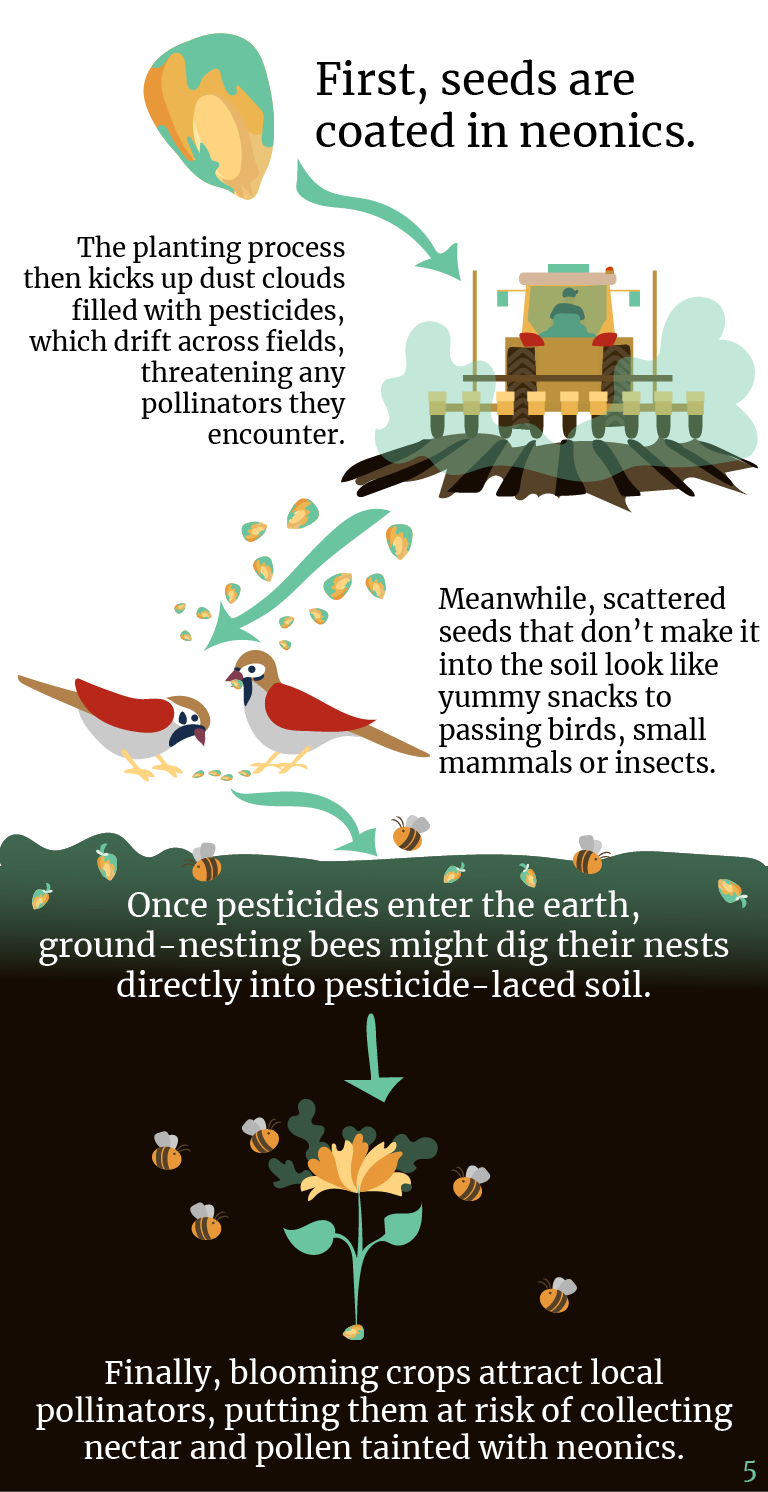

John,
Our nation's farmland is now 48 times more toxic to pollinators than it was 25 years ago. The biggest culprit? Neonics -- a class of pesticide that wreak havoc on bees' nervous systems and take down entire hives.1
Yet the vast majority of soybean, corn and cotton seeds -- up to 80% -- are coated in these toxic pesticides before they ever reach the ground.2 In fact, it's often difficult for farmers to find seeds that haven't been coated in neonics.3
And a single corn seed contains enough toxins to kill 80,000 bees.4
But how exactly do those seeds go from being planted to killing pollinators?

Throughout its life cycle, only about 5% of a coated seed's pesticides end up in the growing plant -- leaving 95% of toxic neonics to leach into our soil, air or local waterways.6
And after all that, what do we get in return? It turns out, not much. By the Environmental Protection Agency's own estimation, neonic seed treatments on soybeans offer "little or no overall benefit" in terms of yield.7
We're facing a shocking decline in bee populations nationwide. If we continue to pump our ecosystems full of toxic chemicals that drift through the air, soak into the soil, run directly into our waterways and poison creatures as they go, bees won't stand a chance.
It's time to eliminate the use of neonics in our agriculture and give bees the chance they need to survive.
Thank you,
Ellen Montgomery
P.S. We're campaigning to stop the worst uses of neonics in our agriculture and protect plants and wildlife from toxic threats. Will you donate to join our work?
1. Stephen Leahy, "Insect 'apocalypse' in U.S. driven by 50x increase in toxic pesticides," National Geographic, August 6, 2019.
2. Steve Blackledge, "How just a single seed can kill 80,000 bees," Environment America, June 30, 2025.
3. Mark Moran, "Iowa farmers question need for treated seeds," Public New Service, April 17, 2025.
4. Steve Blackledge, "How just a single seed can kill 80,000 bees," Environment America, June 30, 2025.
5. Steve Blackledge, "How just a single seed can kill 80,000 bees," Environment America, June 30, 2025.
6. Steve Blackledge, "How just a single seed can kill 80,000 bees," Environment America, June 30, 2025.
7. "Benefits of Neonicotinoid Seed Treatments to Soybean Production," United States Environmental Protection Agency, March 25, 2025.
Your donation will be used to support all of our campaigns to protect the environment, from saving the bees and protecting public lands, to standing up for clean water and fighting climate change. None of our work would be possible without supporters like you. Environment Colorado may transfer up to $50 per dues-paying member per year into the Environment Colorado Small Donor Committee.
Environment Colorado, Inc.
1543 Wazee St., Suite 400, Denver, CO 80202, (303) 573-3871
Member questions or requests call 1-800-401-6511.
Facebook | Twitter

If you want us to stop sending you email then follow this link -- Unsubscribe.